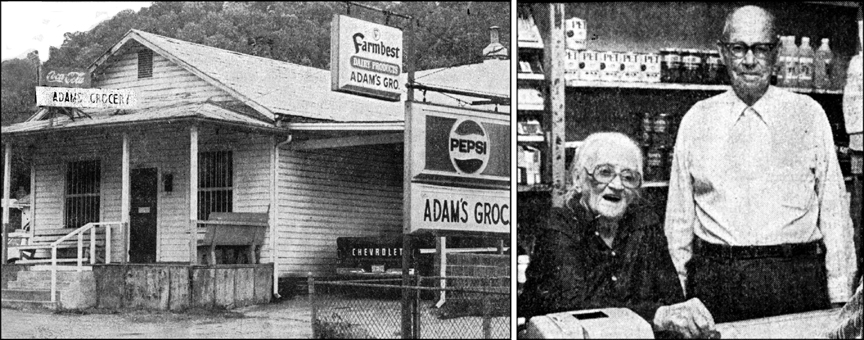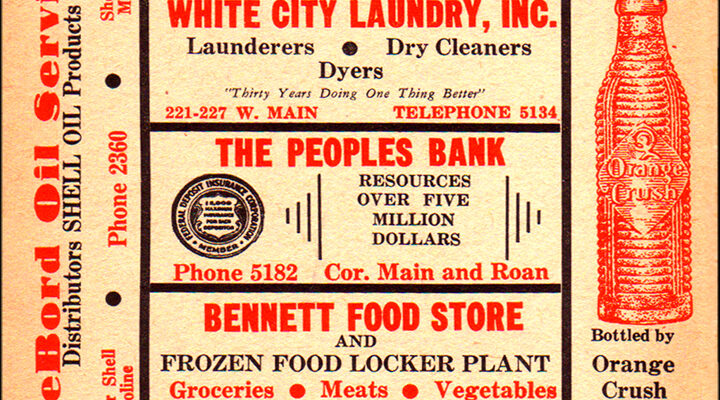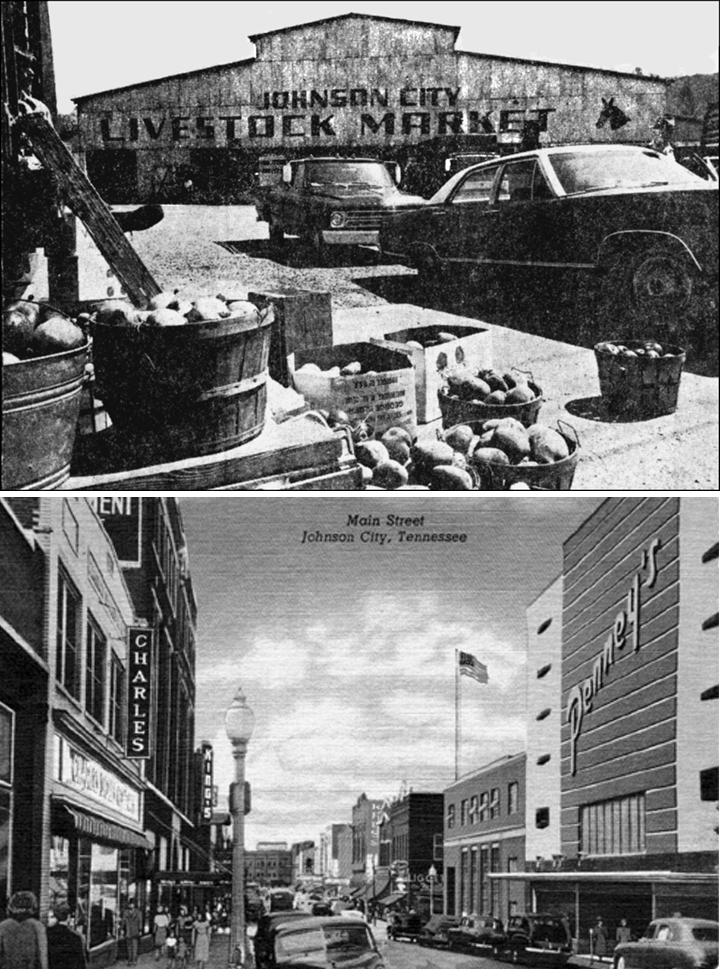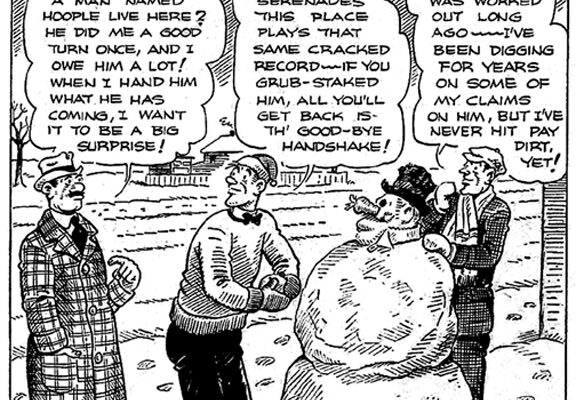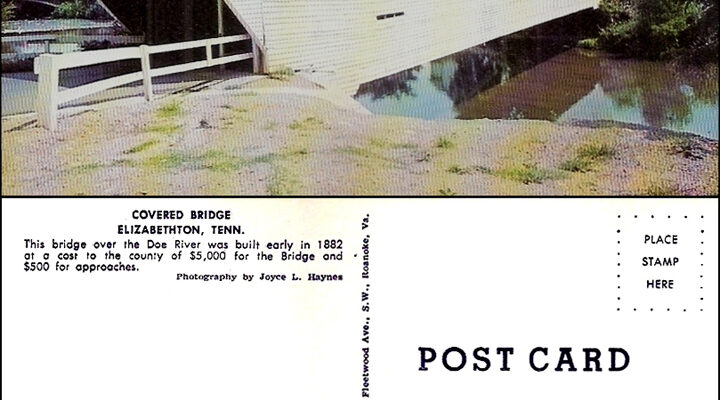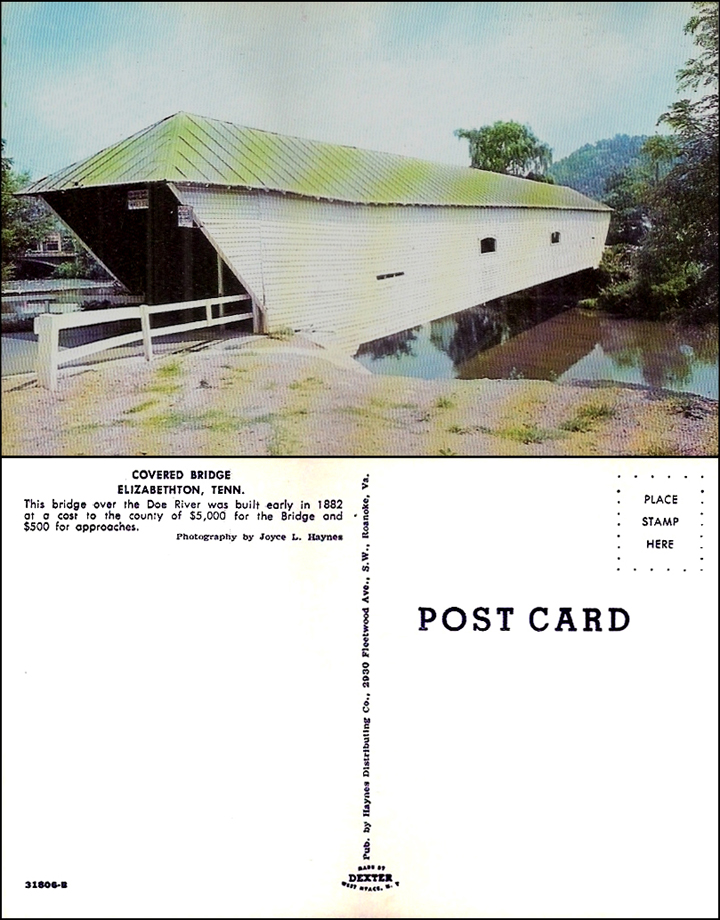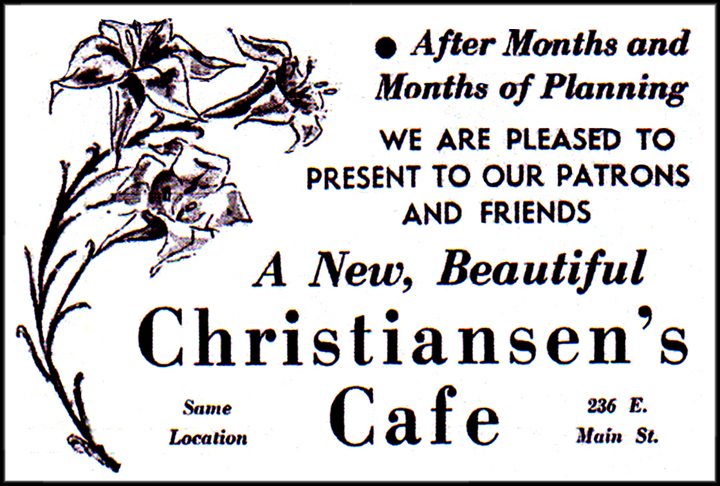I have fond remembrances of patronizing several “mom and pop” grocery stores in Johnson City during my youth. The earliest one I recall was the Red Store in the late 1940s (Bert Weems, later W. Howard Stewart, located on W. Market at W. Watauga).
Others included Ford Wilson Grocery (Ford and Verna Wilson, Elm Street, delivered groceries to our apartment in the 1940s), West Side Grocery (Carroll and Nettie Younce, two of my favorite people, W. Market at Knob Creek Road), Fox Grocery (Henry and Louise Fox, Knob Creek Road near Peachtree), Bailey and Son Grocery (Frates and Mary Bailey, Earnest Street, selling those wonderful orange sherbet and vanilla ice cream “pushups”) and Puckett’s Grocery (Jeff and Martha Puckett, Forest Avenue).

Today’s column spotlights Adams Grocery at 109 E. Main (Guy and Carrie Adams). I recall the store but do not remember going in it. Karen Roberts of the Johnson City Press-Chronicle interviewed the couple in October 1988.
The couple sold groceries in the front of their home and lived in the back. Three old store signs graced the entrance with each one having a different product displayed: Coca Cola, Farmbest and Pepsi. Vintage soda pop machines and an ice cream freezer stood next to the walls along the front and side while the other two were stocked high with canned goods. Two benches greeted patrons on the front porch, as did a Chevrolet truck, usually sitting under the carport, and a cat named Bill that roamed freely about the place.
Karen noted that big-name chain stores extinguished much of the smaller stores’ trade. However, the couple was the epitome of small struggling grocers from that time. In good and bad times spanning three decades, the Adams’ business philosophy of treating customers with respect was unwavering.
“If I ever mistreated anybody in my life,” said 87-year-old Carrie, “I don’t know it. That makes a big difference with customers. If you treat them nice, you can get along with the world. People came in the store as much for friendship as for food. Not many people come by anymore because the dirt road out front is now paved, carrying torrents of traffic. You can hardly get across the street now. Would you send your kid to the store in that traffic?” Karen readily understood what Carrie was talking bout because passing cars and trucks drowned out most of what she was saying.”
“Also hurting small business are large companies giving big stores hefty discounts,” said Carrie. “If you were starving to death,” you couldn’t get anything to eat at a big store. If anybody comes in here and says that they are hungry, we give them something to eat. It happens almost every week.”
Guy, Mrs. Adams husband of 70 years, added his two cents: “Sometimes people knock on our door at five o’clock in the morning. There is no certain time for us to get up or go to bed.” This presented no problems to the couple.
Mr. Adams, a former livestock dealer who was 90 years old at the time of the interview, was mostly a silent partner, except when he talked of his love for horses. Pointing to Keystone, a housing project down the street, Adams noted that it belonged to his family. “It was just a big cornfield. It’s the first winter I ain’t kept some horses out there, but if I live to warm weather, there will be horses in that lot.”
Mrs. Adams boasted of her ability to get along with people in a neighborhood that some people consider a bit rough. “I get along with the meanest boys in Keystone and that’s saying a lot. They are all good to us,” Mrs. Adams said. The subtle way Mrs. Adams handles a disagreement has led to an enduring marriage. She makes her point and abruptly leaves without any argument.
When the couple was asked if they would consider selling the store, Carrie responded that they would keep it open as long as they were physically able. They needed the income plus it was a part of their life and their home.
